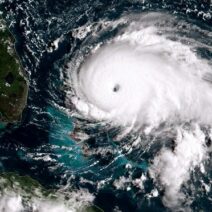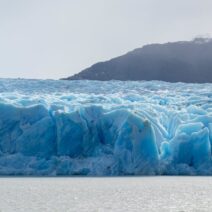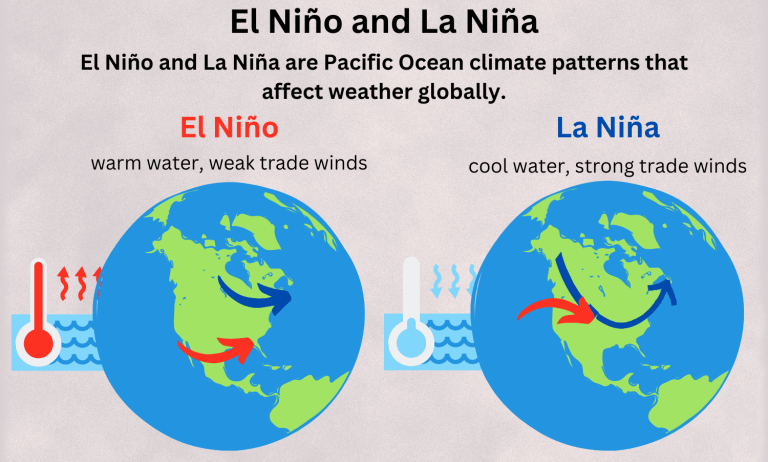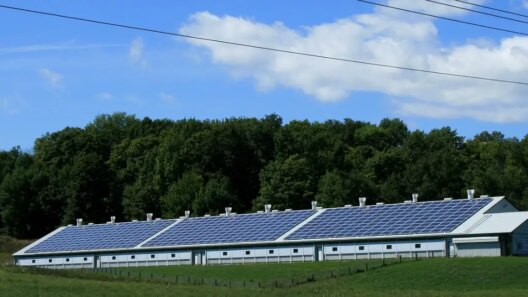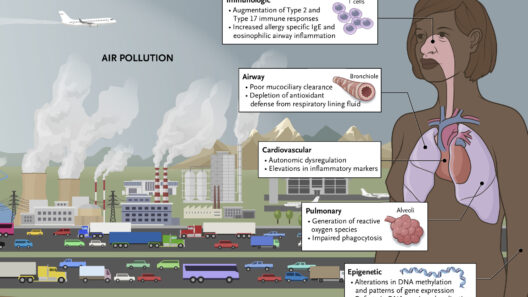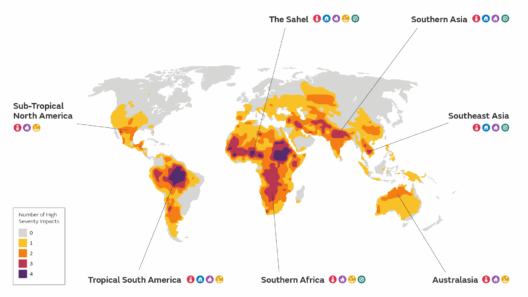In the grand theatre of Earth’s climate systems, two key players, El Niño and La Niña, engage in an intricate dance that significantly influences weather patterns across the globe. Though these phenomena are natural and recurring, their recent interactions with anthropogenic global warming raise pivotal questions about the future. As we observe the cyclical nature of this climatic waltz, we must ponder: How do El Niño and La Niña shape our warming world, and what challenge does this pose for humanity?
To comprehend the implications of these climate phenomena, we first need to establish what exactly El Niño and La Niña are. Both are associated with variations in ocean temperature in the central and eastern Pacific, fundamentally altering atmospheric circulation. El Niño is characterized by warmer ocean temperatures, while La Niña features cooler conditions. Their impacts stretch far beyond coastal Peru, affecting weather patterns and ecosystems worldwide. The oscillation between these phases can disrupt rainfall, influence storm severity, and even alter agricultural yields.
During an El Niño event, the normal upwelling of cold, nutrient-rich waters off the coast of South America is suppressed. This can lead to devastating effects, including reduced fish populations and disrupted food chains. Conversely, La Niña episodes typically stimulate robust fish stocks due to enhanced upwelling, but they can also contribute to severe droughts in some areas and excessive rainfall in others. The interplay between these two phenomena highlights their dualistic nature; they can bring both catastrophe and abundance.
As societal awareness of climate change becomes more salient, the connection between these events and global warming warrants closer examination. Notably, the intensification of El Niño and La Niña episodes may correlate with rising global temperatures. With warmer baseline ocean temperatures, the intensity and frequency of these phenomena can potentially elevate, leading to more extreme weather conditions. The question emerges: could the playful dance of El Niño and La Niña turn into a chaotic confrontation in a warming world?
El Niño events are marked by significant weather abnormalities. For instance, they often lead to increased rainfall in the southern United States and Peru, while causing droughts in Australia and Indonesia. The warm water alters weather patterns, leading to harsher storms and unpredictable rainfall. As our planet continues to warm, one must consider whether these events will become more erratic, complicating agricultural planning and water resource management.
Additionally, the interplay of El Niño and La Niña with broader climate trends raises essential concerns for ecological stability. Coral reefs, for instance, are incredibly sensitive to temperature shifts. Warmer waters associated with El Niño lead to coral bleaching, which can devastate marine biodiversity. The frequency and intensity of these temperature spikes, therefore, create an ongoing challenge for conservation efforts.
Furthermore, the societal implications of fluctuating weather patterns cannot be overstated. Communities reliant on agriculture are particularly vulnerable to the dramatic shifts brought about by El Niño or La Niña. Crop yields may plummet or surge depending on weather outcomes, leaving farmers facing financial instability. The global food supply chain is intrinsically linked to these phenomena, and heightened unpredictability may breed food insecurity in vulnerable populations.
Climate models suggest that as global warming progresses, El Niño and La Niña events may exhibit even more extreme behavior. A 2020 study indicated that the frequency of strong El Niño events could potentially double compared to the historical average, further exacerbating the challenges policymakers face when preparing for climate-related catastrophes. In juxtaposition to these scientific projections, we can ask ourselves with a playful spirit: How prepared are we to tackle the challenges posed by an increasingly volatile climate?
Moreover, oceanic and atmospheric changes resulting from climate warming alter the thermohaline circulation, which plays an essential role in global climate regulation. Changes to this circulation could have cascading effects on global climates, influencing monsoons, shifting habitats, and possibly increasing the severity of hurricanes. The interrelationship of climate systems means that El Niño and La Niña are not isolated phenomena but rather integral components of a larger climatic puzzle.
Amid these apprehensions, there lies a crucial opportunity for resilience and adaptability. Understanding the dynamics of El Niño and La Niña can empower communities to forecast and respond to their impacts more effectively. Strategic investments in climate-ready agriculture, enhanced water management systems, and stronger disaster preparedness programs are essential steps toward mitigating the challenges posed by these climatic events. Investing in research and technology can enhance predictive models, allowing societies to brace for impending fluctuations.
Education plays a critical role in preparing future generations to engage with these climatic phenomena. Raising awareness about El Niño and La Niña, along with fostering a deeper understanding of their interconnections with climate change, can equip communities with the tools necessary to adapt and respond. This knowledge transfer is crucial for instilling a sense of stewardship and responsibility towards our environment.
In conclusion, the intricate dance of El Niño and La Niña holds profound implications for a warming world. As their frequencies and intensities may increase with climate change, the challenge posed to humanity becomes more pressing. While we navigate this unpredictability, we must remain vigilant, leveraging knowledge and innovation to ensure a sustainable future. The rhythm of this dance might be whimsical, but the stakes are anything but lighthearted.
